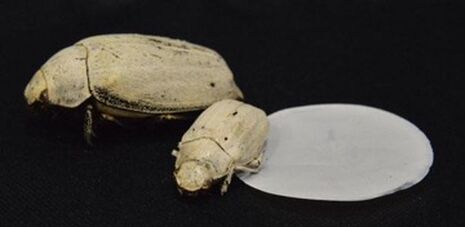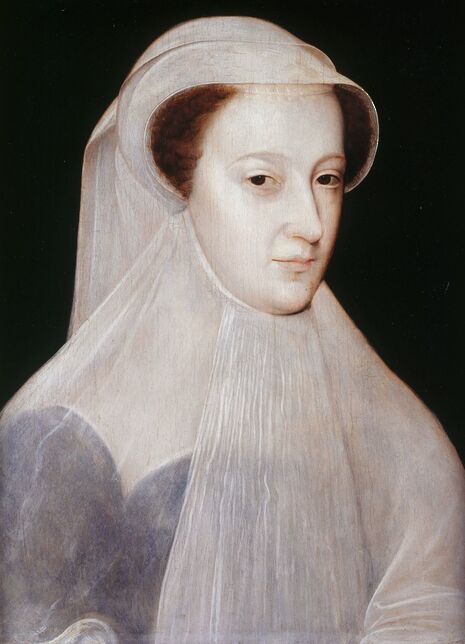The ‘colour of nothing’ is much more than that
What happens when all the colours are mixed together? What happens when there’s nothing there? Olimpia Onelli examines the historical role the colour white plays

White is often associated with innocence (think wedding gowns), virtue (see the White House), and cleanliness (as in doctors’ coats). Traditionally seen as the opposite of black, in some cultures it may also symbolise mourning and funerals, particularly in Asian countries – though in the 16th and 17th century it was not uncommon for widows in Europe to wear white.
But what makes something appear white? White originates from the addition of all colours with the same intensity. In this sense, it is the opposite of black – which is the complete absorption of all colours. There are two main physical mechanisms to produce such broadband reflectivity: multiple light scattering, which is by far the most common, and additive mixing.
Air bubbles can also act as scattering elements: this explains why as you whisk egg whites, the mixture becomes whiter and whiter
Multiple light scattering occurs when light contacts a material composed of small granules, known as ‘scattering elements’, which diffuse the incoming light by scattering each photon in a random direction. If this process is completely wavelength independent, all colours are randomised with the same efficiency and add up to give a white appearance. It is very crucial that the direction of the incoming light gets lost: if you were to reflect all colours with high efficiency without scrambling the direction of the photons, you would obtain a mirror, not a white surface.

In nature, you can observe multiple light scattering in clouds, where small water droplets scatter light, and snow, where the ice crystals constitute the scattering elements. Air bubbles can also act as scattering elements: this explains why as you whisk egg whites, the mixture becomes whiter and whiter. Industrially, white paint is produced by suspending zinc or titanium oxide in a liquid medium. This has replaced the more traditional ‘lead white’, a complex salt used in the antiquity by artists and now banned in most countries due to its toxicity.
The biggest technical challenge posed by white paints is to produce coatings that have a very high degree of opaqueness. You might be familiar with this problem if you have tried painting a wall white: you need to lay quite a few hands of paint before losing any see-though effect due to the colour underneath. This problem arises because the light scattering inside the paint is not very efficient. The main reason for this is that it is very difficult to pack a large number of scattering elements in a small space whilst preventing them from ‘shadowing’ each other. Thus, the whiteness of an object is usually quantified by its whiteness as a function of thickness.
By this definition, the whitest materials found in nature is the beetle Cyphochilus,whose scales can achieve 80% reflectivity in just 10 µm of thickness (that is, about 1 tenth of the width of a hair) thanks to a very efficient packing strategy. If you were to cut a white sheet of paper to be the same thickness as the beetle, it would be almost perfectly transparent. Scientists at Cambridge University and Aalto University have mimicked the arrangement of the scattering elements in the beetle to obtain paper sheets as bright as this amazing insect.
The other seemingly contradictory method to achieve white is by mixing all colours with high intensity. This is typically achieved with a number of light sources, each emitting at a different wavelength range, on a small enough length scale to be unresolvable by the human eye and thus appearing blurred together.
This is commonly seen in LCD screens where each pixel is constituted by a red, a green, and a blue region to match our eye’s colour receptors. These are switched on and off in different combinations to produce white as well as all the other colours. If you put a magnifying glass to your computer screen, you might see for yourself that there is far more than meets the eye with each pixel.
 News / Eight Cambridge researchers awarded €17m in ERC research grants27 December 2025
News / Eight Cambridge researchers awarded €17m in ERC research grants27 December 2025 News / Clare Hall spent over £500k opposing busway 24 December 2025
News / Clare Hall spent over £500k opposing busway 24 December 2025 Comment / League tables do more harm than good26 December 2025
Comment / League tables do more harm than good26 December 2025 Comment / The ‘class’ of Cambridge24 December 2025
Comment / The ‘class’ of Cambridge24 December 2025 News / Caius mourns its tree-mendous loss23 December 2025
News / Caius mourns its tree-mendous loss23 December 2025









